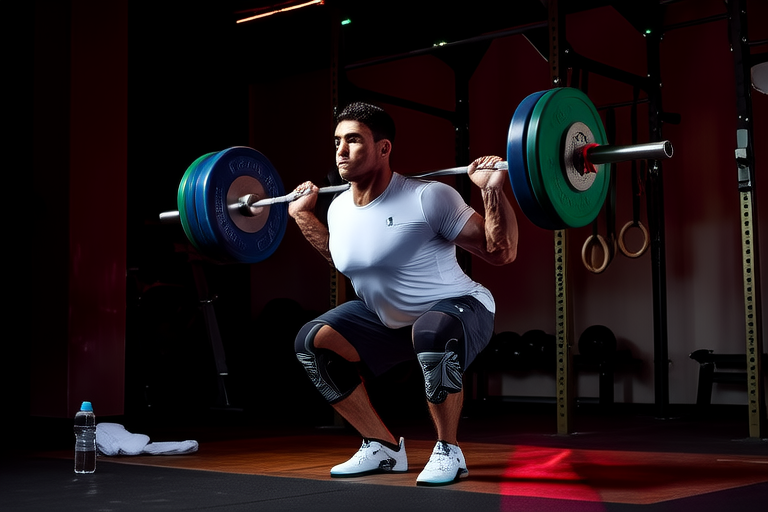Boost Your Performance: A Guide to Sports Science and Precautions
Sports science plays a pivotal role in enhancing athletic performance while simultaneously reducing the risk of injuries and burnout. By understanding the physiological demands of specific sports and tailoring training regimens accordingly, athletes can optimize their physical capabilities and mental resilience. This guide aims to provide a comprehensive overview of sports science principles, emphasizing the importance of nutrition, hydration, sleep, recovery techniques, and injury prevention strategies. It also highlights common pitfalls to avoid and offers practical advice on integrating these elements into a sustainable training program.
Key Principles of Sports Science
Nutrition
The foundation of any successful athletic endeavor is proper nutrition. Athletes need to consume a balanced diet rich in carbohydrates, proteins, and healthy fats to fuel their workouts and support muscle repair. Carbohydrates are essential for providing energy during high-intensity activities, while proteins are crucial for muscle recovery and growth. Fats contribute to overall health and energy supply, especially during endurance events. Additionally, vitamins and minerals play vital roles in various bodily functions, including immune system support and bone health. Timing meals around training sessions can further enhance performance; consuming a mix of carbs and protein post-exercise aids in replenishing glycogen stores and promoting muscle repair.
Hydration
Proper hydration is often overlooked but is critical for maintaining optimal performance. Dehydration can lead to decreased stamina, impaired cognitive function, and increased risk of heat-related illnesses. Athletes should aim to drink water throughout the day, not just during workouts. Electrolyte replacement drinks may be necessary during prolonged or intense exercise to maintain electrolyte balance. Monitoring urine color is a simple way to gauge hydration status; clear or light yellow urine indicates adequate hydration, whereas darker shades suggest dehydration.
Sleep
Sufficient sleep is indispensable for athletic performance. During sleep, the body repairs tissues, consolidates memory, and regulates hormones involved in metabolism and stress response. Most adults require seven to nine hours per night. Athletes might benefit from additional rest periods, particularly after heavy training days. Establishing a consistent sleep schedule and creating a relaxing bedtime routine can improve sleep quality. Avoiding caffeine, nicotine, and electronic devices before bed helps promote better sleep hygiene.
Recovery Techniques
Effective recovery strategies are integral to maintaining peak performance levels. Active recovery, such as gentle jogging or yoga, promotes blood flow and aids in muscle repair without causing undue stress. Passive recovery methods like massage therapy, foam rolling, and stretching help alleviate muscle tension and stiffness. Compression garments can assist in reducing swelling and improving circulation. Cryotherapy and contrast baths (alternating hot and cold water immersion) are also popular recovery tools among professional athletes. Incorporating regular recovery days into training schedules allows the body time to recuperate fully, thereby preventing overtraining syndrome.
Injury Prevention Strategies
Preventing injuries is paramount for sustaining long-term athletic success. Warm-up exercises that gradually increase heart rate and engage major muscle groups prepare the body for more strenuous activity. Cool-down routines involving stretching help prevent muscle soreness and stiffness. Gradually increasing training intensity and volume minimizes the risk of overuse injuries. Proper technique instruction ensures movements are executed safely and efficiently, reducing strain on joints and muscles. Wearing appropriate protective gear tailored to each sport provides an added layer of safety. Regular medical check-ups allow early detection of potential issues before they escalate into serious problems.
Common Mistakes Athletes Should Avoid
Athletes frequently make errors that hinder progress or increase injury likelihood. Neglecting warm-ups and cool-downs leaves muscles unprepared for exertion and vulnerable afterward. Ignoring signs of fatigue or discomfort can push the body beyond its limits, leading to exhaustion or injury. Overtraining without sufficient recovery leads to diminished performance and increased susceptibility to illness. Poor nutrition choices fail to provide adequate fuel for workouts, impacting both short-term performance and long-term health. Disregarding proper form during exercises exposes athletes to unnecessary risks.
Integrating Practices into Training Regimens
To achieve sustained improvements in athletic performance, it’s essential to integrate all aspects of sports science into a cohesive training plan. Start by assessing current fitness levels through standardized tests or consultations with qualified professionals. Set realistic goals aligned with personal strengths and limitations. Develop a structured schedule balancing different types of training—strength, endurance, flexibility—with adequate rest periods. Prioritize proper nutrition based on individual dietary needs and preferences. Ensure access to clean drinking water and consider electrolyte supplements if needed. Establish a consistent sleep pattern conducive to quality rest. Implement targeted recovery techniques according to personal preferences and availability. Continuously monitor progress towards set objectives and adjust plans accordingly. Seek guidance from experienced coaches or trainers when necessary to refine techniques and address challenges effectively.
By adhering to these guidelines, athletes can maximize their potential while safeguarding themselves against common pitfalls associated with rigorous training regimes. Embracing sports science fosters an environment where continuous learning and adaptation drive ongoing development and success.










